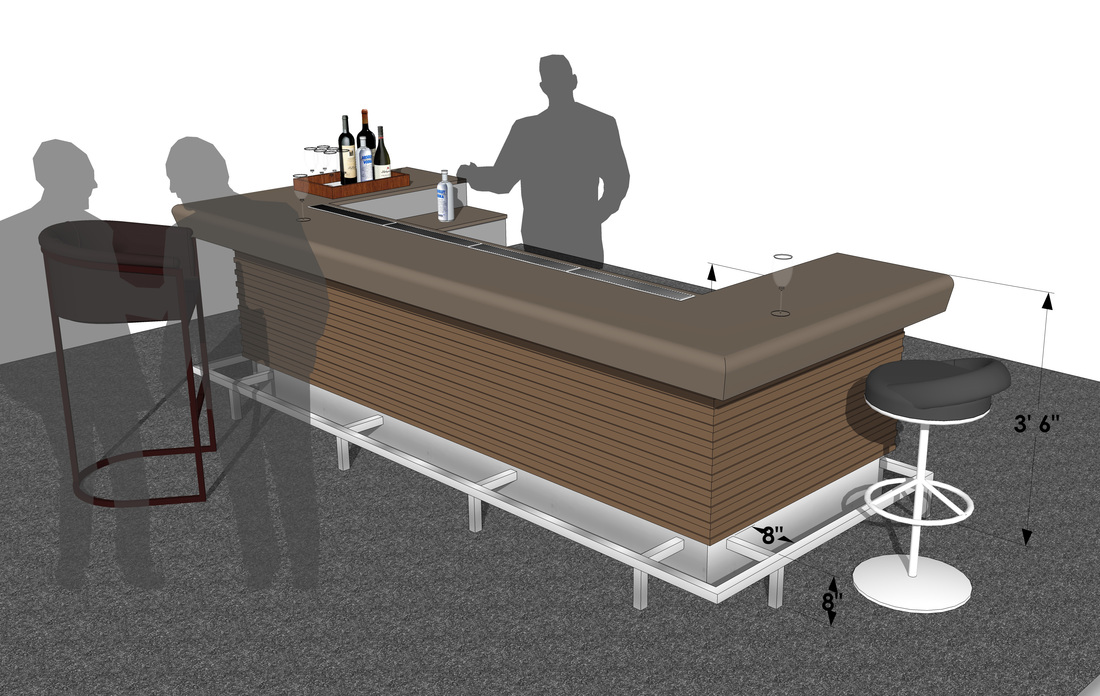


This pattern can help us decide where to get quieter or louder. Playing Beautifully: Expression and PhrasingĪnd we can use our knowledge of the four-measure pattern to decide on phrasing and expression. The first bar of a four-bar phrase is also a great place to jump in, if we ever get lost and need to jump back or forward. And it helps us keep our place in the music. The four-bar formula also helps organize the piece in our minds. This will help the music sound more cohesive and connected when put together again. Tip: Go all the way to the downbeat of the 5th measure.
Typical song bar length how to#
And this formula can help us decide how to break apart the piece. It’s useful to break the piece into smaller sections for practice. For this reason, they work well as practice sections. Logical Practice Sectionsįour-bar phrases usually sound good as a complete whole. We want to use them in a meaningful way.Īnd there are very real applications for this framework. Ideally, ideas such as the Four-Measure Formula have practical application. So now that we know the basic role of each measure, how do we use this in our music? How to Use the Four-Measure Formula in Your Music We maintain the forward thrust of the music all the way to the next downbeat (the first note of the next measure).Īnd if we find more than a single note in this measure, we treat them as connected to and leading to the next downbeat. We don’t let the vitality of the music drain during a long note. In practical terms, this means that we stay alert and counting the rhythm. So we don’t want to bring the music to a complete stop. Whether or not this happens, the music normally continues. The current phrase may end here on a long note. Measure Four: The KickerĪnd in the last measure of our 4-bar phrase we draw the listener toward the next arrival (the next phrase). The purpose and intention are the same – to create anticipation and lead the music forward. The same role is at work here, but on a larger scale. Note: The term “upbeat” often referrs to the last beat of a measure, which leads to the next downbeat. They may also use rhythm or note density to create tension.Įither way, the effect is a “stirring of the pot”. It may be a dissonant chord or more notes not in the original key. We feel unrest.Ĭomposers often use the harmony (underlying chords) to create this effect. Using the journey metaphor, Measure Three is the adventure. This measure often creates a tension that will resolve in the final measure. If we think of the 4-measure sequences as “flow, ebb, flow, ebb”, this is the second “flow” measure. This is the second strongest measure, behind the first. Measure Three prepares us for the end of the phrase. In practical terms, this often means getting quieter. We take one step back before taking two forward.

We can think of Measure Two as a moment of repose. This means that it “pulls back” in order to thrust ahead again later. From here, we’ll journey out and likely return. It tells the listener the starting point. Previous bars have led to this one.Īt the very beginning of a piece or section, this can also be a statement of “homebase”. The first measure is often the arrival of that which has come before. And 4-bar phrases help to serve this purpose.Įach measure has a role to play in engaging listeners and developing the “story” of the music (also called the “ long line”). One of the main goals of music is to create a forward momentum. Within each 4-measure phrase, we find a journey from one place to another. Note: Find basic music theory lessons here. But most often, the 4-bar phrase still holds as a unit. Phrases share similar traits.Ĭomposers may string more than one 4-bar phrase together to create an 8- or 16-bar phrase. This means that for every four measures, or bars, we find a complete thought.Ī written sentence usually has a beginning, middle and end, and closes in a punctuation mark. We may call these sections “phrases”.Īnd one of the most common phrase-lengths is four measures. The Most Common Size of a Musical Phrase: 4 BarsĬomposers often group music into small sections. One common pattern is the four-bar phrase. Does music have magical formulas, that make everything sound better? Well, not exactly magic, but yes, music does contain common patterns.Īnd what happens when we recognize musical patterns and understand them? We’re more equipped to play beautifully.


 0 kommentar(er)
0 kommentar(er)
